Outdoor THCA Harvest Tips: Maximizing Your Cannabis Crop Quality
Growing cannabis outdoors presents a unique set of rewards and challenges that every cultivator must master to achieve premium quality results. While outdoor THCA harvest operations can produce exceptional cannabinoid profiles and robust terpene expressions, they also require careful planning, precise timing, and adaptive strategies to work harmoniously with nature's unpredictable elements.
Unlike controlled indoor environments where cultivators can manipulate every variable from light cycles to humidity levels, outdoor cannabis harvest tips must account for weather fluctuations, seasonal changes, pest pressures, and environmental stressors that can significantly impact your final product quality. The difference between a mediocre harvest and an exceptional one often comes down to understanding these challenges and implementing strategic solutions at the right moments.
The beauty of THCA outdoor growing lies in its connection to natural growing cycles, where plants can develop complex cannabinoid and terpene profiles under the full spectrum of sunlight. However, this natural approach demands that cultivators become students of their local environment, weather patterns, and plant biology. The final weeks before harvest are particularly critical, as this is when THCA concentrations peak and terpene profiles mature to their fullest expression.
This comprehensive guide will walk you through essential outdoor harvest techniques that professional cultivators use to maximize crop quality, minimize losses, and ensure that months of careful cultivation result in premium-grade flower. From understanding your microclimate to making split-second decisions about harvest timing, we'll cover the strategies that separate exceptional outdoor harvests from disappointing ones.
Understanding Your Local Climate and Frost Dates
Success in cannabis outdoor cultivation begins with intimate knowledge of your local growing season and climate patterns. Your region's first and last frost dates act as bookends for your cultivation season, but understanding the nuances between these dates is where true mastery begins.
Start by researching historical weather data for your specific area. Don't just rely on general regional information – microclimates can vary dramatically even within a few miles. Contact your local agricultural extension office, consult with experienced local growers, and maintain detailed records of weather patterns from season to season. Pay particular attention to the average first frost date in autumn, as this will be your hard deadline for harvest completion.
However, frost dates alone don't tell the whole story for THCA crop quality optimization. Consider temperature patterns throughout the flowering period, as THCA synthesis is influenced by both daytime and nighttime temperatures. Many cultivators report that cool nighttime temperatures in the final weeks of flowering can enhance cannabinoid production and terpene preservation, but extreme temperature swings can stress plants and reduce overall quality.
Understand your region's typical rainfall patterns during the harvest window. Some regions experience a distinct dry season that aligns perfectly with harvest time, while others face increased precipitation that can threaten crop quality. Knowing what to expect allows you to plan protective measures, adjust your planting schedule, or select genetics better suited to your climate.
Altitude and latitude also play crucial roles in outdoor harvest timing. Higher elevations typically experience earlier frosts and more dramatic temperature swings, while latitude affects photoperiod changes that trigger flowering. Plants in northern regions may begin flowering earlier than those in southern locations, affecting your overall harvest schedule and the duration of the flowering period.
Create a cultivation calendar specific to your location that includes not just frost dates, but also average temperature ranges, precipitation patterns, and daylight hours throughout the growing season. This calendar becomes your roadmap for making informed decisions about when to plant, when to expect flowering to begin, and when to plan your harvest window.

Monitoring Weather Forecasts Before Harvest
As harvest approaches, outdoor cannabis tips become increasingly focused on weather monitoring. The final two weeks before harvest are critical, and unexpected weather events can devastate an otherwise successful crop. Developing a systematic approach to weather monitoring can mean the difference between premium flower and moldy losses.
Invest in reliable weather monitoring tools beyond basic smartphone apps. Professional-grade weather stations that track temperature, humidity, barometric pressure, and rainfall can provide hyperlocal data specific to your growing site. Many modern weather stations connect to smartphone apps, allowing you to monitor conditions remotely and receive alerts when conditions threaten your crop.
Check multiple weather sources daily as harvest approaches. Don't rely solely on one forecasting service – compare predictions from the National Weather Service, local news meteorologists, and specialized agricultural weather services. Weather patterns can change rapidly, and what looks like a safe harvest window can suddenly become risky if storms develop unexpectedly.
Pay special attention to extended forecasts during the week leading up to your planned harvest. Look for multi-day windows of dry weather with moderate temperatures and low humidity. Ideally, you want to harvest during stable high-pressure systems that bring clear skies and dry conditions, as these environmental factors allow for optimal drying and curing to begin immediately after cutting.
When monitoring forecasts for maximize outdoor THCA potential, don't just focus on precipitation. Wind speeds matter tremendously – high winds can damage trichomes, break branches, and introduce moisture from neighboring vegetation. Similarly, extreme temperature forecasts should influence your timing, as harvesting in temperatures above 85°F (29°C) can lead to rapid terpene loss, while temperatures below 40°F (4°C) can damage plant tissues and make trimming more difficult.
Develop a contingency harvest plan based on weather monitoring. If forecasts show problematic weather approaching, be prepared to harvest earlier than originally planned. While slightly immature trichomes are disappointing, they're far better than losing your entire crop to mold, frost damage, or storm destruction. Have your harvest team, equipment, and processing space ready to mobilize on short notice when weather windows open up.
Consider investing in radar and satellite monitoring apps that show approaching weather systems in real-time. This can give you crucial extra hours of warning to complete harvesting before rain arrives or to implement protective measures for plants that aren't quite ready for harvest.
Dealing with Rain and Moisture Concerns
Water is essential for plant growth, but during the final flowering stages and harvest period, excess moisture becomes one of the most significant threats to outdoor grow harvest quality. Understanding how to manage moisture exposure can save your crop from devastating losses.
Rain during late flowering introduces moisture deep into dense flower clusters where air circulation is minimal. This creates perfect conditions for botrytis (bud rot) and powdery mildew development. Once established, these fungal diseases can spread rapidly through your crop, rendering entire plants unmarketable. The key is prevention through strategic moisture management and quick action when rain is unavoidable.
If rain is forecasted within your harvest window, assess your options carefully. For plants that are truly ready for harvest (trichomes showing 20-30% amber coloration, pistils mostly darkened and receded), consider harvesting immediately before the rain arrives, even if that means working through the night or mobilizing extra help. A few hours can make the difference between a successful harvest and significant losses.
For plants not quite ready for harvest, implement protective strategies. Large canopy plants can be partially protected with tarps or hoop structures covered with clear plastic sheeting. However, be cautious – protective coverings can trap heat and humidity, creating their own problems. Remove coverings immediately when rain stops to allow air circulation and prevent greenhouse-effect heat buildup.
After unexpected rain events, inspect your crop thoroughly within 24 hours. Focus on the densest flower clusters and areas where water can collect. Look for any discoloration, unusual odors, or signs of rot development. If you find infected areas, consider harvesting immediately to prevent spread, removing affected portions before they contaminate healthy flowers.
Implement a post-rain drying strategy for plants you're not ready to harvest. If possible, gently shake plants to remove excess water from flowers. Some cultivators use leaf blowers on low settings to accelerate drying, though this must be done carefully to avoid trichome damage. Improving air circulation through selective leaf removal or fan placement can help flowers dry more quickly and reduce mold risk.
Understanding morning dew patterns is equally important. Even without rain, heavy dew can saturate flowers overnight, particularly in regions with high humidity or near water sources. This natural moisture follows daily cycles and should factor into your harvest timing decisions, which we'll explore in the next section.
Morning vs Evening Harvest Timing for Outdoor
The debate over optimal harvest timing – morning versus evening – is one of the most discussed topics in outdoor harvest techniques, and the answer depends on your specific priorities and environmental conditions.
Morning Harvest Advantages:
Many experienced cultivators prefer morning harvests for several practical reasons. Plants have spent the night in darkness, during which they've translocated sugars and starches to roots and stems rather than keeping them in flowers. This can result in a smoother-smoking final product with less harsh plant sugars remaining in the buds. Additionally, morning temperatures are typically cooler, which helps preserve volatile terpenes that can evaporate quickly in afternoon heat.
However, morning harvests come with the dew moisture challenge. If you harvest too early, flowers will be saturated with overnight dew, requiring additional drying time and increasing mold risk during the drying process. The ideal morning harvest window typically begins 1-2 hours after sunrise, once dew has evaporated from flowers but before temperatures rise significantly.
Morning harvests also allow you to process plants throughout the day, taking advantage of optimal working conditions and completing the entire workflow from cutting to hanging in one continuous operation. This efficiency can be crucial when harvesting large outdoor operations where timing and labor coordination matter.
Evening Harvest Advantages:
Evening harvests offer their own benefits for THCA outdoor growing operations. Plants have spent the day photosynthesizing and producing compounds, and some cultivators believe this results in peak terpene and cannabinoid expression in flowers. The absence of dew means flowers are completely dry, reducing immediate mold concerns.
Evening harvests work particularly well in hot climates where daytime temperatures exceed 85°F (29°C). Cutting plants in the evening and processing them overnight or in the early morning hours the following day protects delicate trichomes from heat damage and terpene volatilization. This can be especially important for preserving the aromatic qualities that distinguish premium outdoor flower.
The main disadvantage of evening harvests is the compressed timeline for processing. Unless you have lighting for night work or adequate indoor processing space, you may need to leave cut plants overnight before processing, which can lead to quality degradation if not managed properly.
The Optimal Approach:
For maximum THCA crop quality, consider a hybrid approach based on daily conditions. Check the weather forecast and plan your harvest timing accordingly. On cool, dry days with low humidity, morning harvests work excellently. On hot days or when afternoon storms are predicted, early morning or evening harvests may be preferable.
Regardless of when you harvest, consistency matters more than the specific time. Avoid harvesting during the hottest part of the day (typically 1-4 PM) when terpene loss is highest and plant tissue stress is greatest. Monitor your flowers' moisture levels – they should feel slightly crisp on the outside, not wet from dew or irrigation, but not desiccated from extreme heat.
Protecting Plants from Pests During Late Flowering
The final weeks of flowering represent a critical vulnerability period for cannabis outdoor cultivation when pest pressures can intensify dramatically. As flowers reach peak ripeness and terpene production increases, they become increasingly attractive to various insects and animals that can devastate your crop just days before harvest.
Insect Pest Management:
Caterpillars, particularly budworms, pose one of the most serious threats during late flowering. These pests burrow directly into flower clusters, leaving behind excrement and creating entry points for mold and rot. Inspect your plants daily during the final month before harvest, looking for small holes in flowers, frass (insect droppings), or webbing. Hand-picking remains the safest removal method during this stage, as most pesticides (even organic ones) have minimum day-to-harvest restrictions.
Beneficial insects can provide ongoing pest management during late flowering without residue concerns. Release lacewings, ladybugs, or parasitic wasps to control aphids, thrips, and mites. These beneficial predators work continuously and don't leave any residues that could affect your final product quality. Establish these populations early in flowering for best results.
Spider mites can population explosions during hot, dry periods. While they're less problematic than budworms, heavy infestations can reduce flower quality and introduce contamination. If you discover mites late in flowering, focus on water sprays to knock them off plants rather than using sulfur or oils that can affect flavor. However, avoid water sprays within two weeks of harvest to prevent moisture-related issues.
Vertebrate Pest Management:
Deer, rabbits, and other herbivores can destroy entire crops overnight during late flowering when deterrent options become limited. Physical barriers remain the most effective solution – eight-foot fencing for deer, chicken wire for rabbits and smaller animals. Electric fencing provides an excellent deterrent when properly maintained.
Birds can peck at developing seeds and damage flowers, particularly in regions where hemp is commonly grown and birds have learned to target these plants. Reflective tape, netting, or motion-activated deterrents can help, but must be implemented well before harvest to avoid disturbing plants during critical final development.
Rodents, particularly rats and mice, can climb plants and chew through stems, causing entire branches to fall. They're also attracted to the nutty smell of developing seeds. Set traps around your growing area and maintain a clear perimeter free of debris where rodents might nest.
Integrated Pest Management for Late Flowering:
The key to protecting your outdoor THCA harvest from pests is daily monitoring combined with immediate action when problems are detected. Walk through your crop each morning and evening, inspecting different plants thoroughly. Look at the undersides of leaves, inside flower clusters, and around stem junctions where pests often hide.
Maintain plant health through proper nutrition and water management, as stressed plants attract pests more readily. However, reduce nitrogen inputs during late flowering to avoid encouraging excessive leafy growth that can harbor pests and interfere with flower development.
Consider timing your harvest strategically if pest pressures become overwhelming. Harvesting a week early with minimal pest damage produces better results than waiting for perfect ripeness while pests destroy your crop. Monitor trichome development closely and be prepared to harvest when plants reach acceptable maturity, even if that's slightly earlier than ideal.
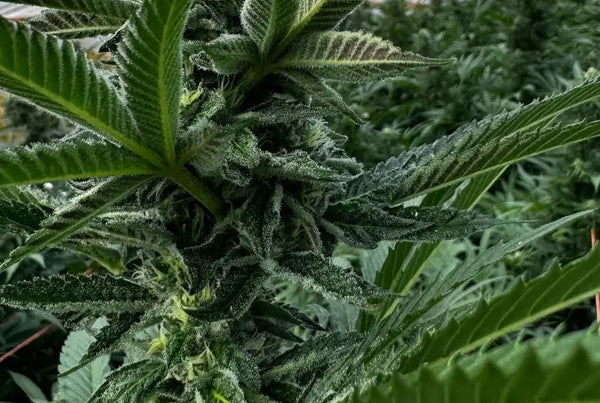
Mold Prevention Strategies Pre-Harvest
Mold represents the single greatest threat to outdoor cannabis harvest tips quality, capable of rendering entire crops unsellable and potentially dangerous to consume. Prevention requires vigilance, environmental management, and strategic interventions during the critical final weeks before harvest.
Understanding Mold Risk Factors:
Botrytis cinerea (gray mold/bud rot) and powdery mildew thrive in conditions common during fall harvests: cool nighttime temperatures, morning dew, and reduced air circulation. Dense flower structures trap moisture and restrict airflow, creating ideal conditions for fungal development. Genetically, some cannabis varieties are more susceptible than others, with extremely dense, large colas showing greatest vulnerability.
Airflow and Plant Structure Management:
Maximizing air circulation through and around your plants is paramount. During the final month before harvest, conduct selective defoliation to improve airflow through the canopy. Remove large fan leaves that block air movement or touch flowers, as these contact points can transfer moisture and fungal spores. Be strategic – excessive defoliation can stress plants, but selective removal of 20-30% of fan leaves significantly improves air circulation.
Space plants adequately from the beginning of your grow, but if plants have grown together, consider selective branch removal or tying branches away from each other to create air channels. In high-humidity regions, some cultivators use fans in outdoor grows, positioning them to create constant gentle air movement through the canopy during high-risk periods.
Preventative Treatments:
Several organic treatments can help prevent mold establishment without leaving problematic residues. Potassium bicarbonate sprays raise leaf surface pH, creating inhospitable conditions for fungal growth. Apply these during vegetative growth and early flowering, but discontinue at least three weeks before harvest to avoid residues.
Bacillus subtilis and Bacillus amyloliquefaciens are beneficial bacteria that colonize plant surfaces and compete with pathogenic fungi. These biological controls can be applied throughout flowering and have minimal harvest restrictions. Regular applications create a protective barrier that prevents mold establishment.
Some cultivators use diluted milk sprays (1 part milk to 9 parts water) as a preventative measure, though results vary and applications should stop at least two weeks before harvest. The proteins in milk can interfere with fungal development, but spray residues must be considered.
Environmental Monitoring:
Invest in humidity monitors placed at canopy level to track conditions where flowers develop. When humidity exceeds 60% for extended periods, mold risk increases dramatically. Use this data to time preventative measures or adjust harvest schedules.
Pay special attention to microclimates within your growing area. Plants in low-lying areas, near water sources, or in corners with restricted airflow face higher mold risks. Prioritize these plants for extra monitoring and consider harvesting them first if mold pressure increases.
Early Detection and Rapid Response:
Inspect your crop daily for early mold signs during the final month before harvest. Look for discolored spots on flowers (brown, gray, or white), unusual odors (musty or different from normal terpene smell), or flowers that feel slimy or different in texture. Early detection allows you to remove affected areas before spores spread.
If you discover mold, act immediately. Remove affected flowers or entire branches, placing them directly into sealed bags to prevent spore dispersal. Do not compost infected material near your growing area. Increase monitoring of surrounding plants, as mold typically spreads from initial infection sites.
Consider partial harvests if mold appears and continues spreading despite interventions. Harvest and process healthy plants immediately while removing and destroying infected ones. This strategy can save the majority of your crop when conditions favor rapid mold development.
Harvesting in Batches vs All at Once
One of the most important decisions for maximize outdoor THCA potential is whether to harvest your entire crop at once or implement a staged harvest strategy. Each approach has distinct advantages depending on your specific circumstances, crop size, and available resources.
Single-Day Harvest Advantages:
Harvesting your entire crop in one operation offers several logistical benefits. You can mobilize your entire harvest team for one concentrated effort, potentially bringing in additional temporary workers for the push. This approach works well for smaller operations (10-50 plants) where the entire crop can be processed in a single long day.
Equipment and workspace utilization is maximized with single-day harvests. You set up your drying space once, use all your trimming tables and tools simultaneously, and complete the transition from field to processing in one coordinated effort. This efficiency can reduce labor costs and simplify scheduling.
Single-day harvests also work well when weather conditions create a limited harvest window. If you're racing against predicted rain or frost, getting the entire crop harvested and under cover quickly takes priority over achieving perfect ripeness on every plant.
Batch Harvest Advantages:
Staged harvesting allows you to optimize ripeness for different plants or even different parts of individual plants. Cannabis flowers don't all mature simultaneously – top colas typically ripen before lower branches that receive less light. By harvesting in 2-3 batches over 1-2 weeks, you can cut top portions when they're perfectly ripe while allowing lower branches additional time to mature, potentially increasing overall yields and quality.
Batch harvests distribute workload more manageably, reducing the need for large temporary labor forces and allowing your core team to maintain quality control throughout the process. This is particularly valuable for operations harvesting 100+ plants, where processing everything in one day would require compromising on quality or working unsustainably long hours.
From a risk management perspective, batch harvests provide insurance against total crop loss. If unexpected weather or pest issues arise, you've already secured portion of your harvest. This diversification of harvest timing can be particularly valuable in regions with unpredictable fall weather.
Making the Decision:
Assess your crop's maturity distribution carefully in the final weeks before harvest. Use a jeweler's loupe or microscope to examine trichomes on multiple plants and different locations on each plant. If trichome development varies significantly across your crop, batch harvesting makes sense. If maturity is relatively uniform, single-day harvest may be optimal.
Consider your processing capacity realistically. Can your drying space accommodate your entire crop at once? Do you have adequate trimming tables, scissors, and labor to process everything in one push? If your infrastructure limits your processing capacity, batch harvests allow you to work within these constraints while maintaining quality.
Weather forecasts should strongly influence this decision. If stable conditions are predicted for 2-3 weeks, you have the luxury of batch harvesting for optimal ripeness. If forecasts show approaching rain or cold fronts, prioritize getting everything harvested quickly, even if some plants aren't perfectly ripe.
For outdoor grow harvest operations, a hybrid approach often works best: harvest the most mature 40-50% of your crop on day one, reassess after 5-7 days, then harvest the remainder when optimal. This balances ripeness optimization with manageable workload and weather risk mitigation.
Field Trimming vs Indoor Processing
The decision between field trimming and indoor processing significantly impacts your workflow efficiency, final product quality, and labor requirements for outdoor harvest techniques. Understanding the advantages and challenges of each approach helps you develop the optimal system for your operation.
Field Trimming Approach:
Field trimming involves removing large fan leaves and sometimes even performing detail trim work immediately after cutting plants in the field. This approach has several compelling advantages, particularly for larger outdoor operations. By leaving the bulk of plant material in the field, you significantly reduce the volume of material that needs to be transported and the space required for processing and drying.
Plants trimmed in the field are typically easier to handle, as you can remove unwanted material before it becomes dry and brittle. Fan leaves come off cleanly when fresh, and you can make structural cuts (removing lower branches, defective flowers) more easily with fresh, pliable plant tissue.
Field trimming can also accelerate the drying process by removing excess leaf material that holds moisture. In humid environments where mold risk is high, this faster initial drying can be beneficial. Additionally, your drying space goes further when you're hanging trimmed branches rather than entire plants with all their foliage.
However, field trimming has significant drawbacks. Working in the field exposes your harvest team to weather conditions, insects, and potential contamination from soil and dust. The quality of field trim work often suffers compared to controlled indoor environments where lighting and ergonomics are optimized. Trichomes are also more vulnerable to damage from handling when plants are fresh and full of moisture.
Indoor Processing Approach:
Moving whole plants or large branches indoors for processing provides better control over environmental conditions and typically results in higher-quality trim work. Your processing team works in comfortable, controlled conditions with proper lighting, ergonomic workstations, and shelter from weather.
Whole-plant drying (or minimally processed branches) allows for slower, more controlled moisture removal that many cultivators believe results in better flavor and smoothness. As the plant dries slowly, chlorophyll breaks down more completely, and terpenes are preserved more effectively than with faster-drying trimmed flowers.
The slower drying process also provides a buffer period before final trimming must be completed. You can hang plants and return to trim them at the optimal moisture level (60-65% relative humidity in the drying room), when flowers have the ideal texture for precise trim work – not so dry that trichomes shatter, but dry enough that leaves separate easily from flowers.
The main disadvantage of indoor processing is space requirements. Whole plants take up significantly more drying room than trimmed branches, which can be limiting for operations with constrained indoor space. Transportation is also more challenging – you'll need vehicles capable of handling large quantities of fresh plant material, and loading/unloading requires more time and labor.
Hybrid Processing Strategy:
Many successful outdoor operations implement a hybrid approach that captures advantages from both methods. In the field, they perform basic processing: removing large fan leaves, cutting plants into manageable branch sections, and discarding any obviously damaged or moldy material. This "rough trim" reduces transport volume and leaves behind waste material to decompose in the field.
These rough-trimmed branches then move to covered processing areas (not necessarily fully indoor, but at least protected from weather) where they're hung for initial drying. Once dried to appropriate moisture levels, the final detail trimming occurs in a controlled environment where quality can be carefully maintained.
This approach works particularly well for THCA outdoor growing operations because it balances efficiency with quality. You minimize transport volume and space requirements while still providing controlled conditions for the critical drying and final trimming phases that most impact final product quality.
Transportation and Handling of Outdoor Crops
The often-overlooked logistics of moving your harvest from field to processing area can significantly impact final product quality for outdoor cannabis cultivation. Proper handling during this transition prevents trichome damage, maintains flower structure, and sets the stage for successful drying and curing.
Container Selection:
Choose transportation containers carefully based on your processing approach. For whole plants or large branches, consider using clean tarps, shallow bins, or specially designed harvest carts that prevent flowers from being crushed under their own weight. Avoid deep containers where plants at the bottom become compressed by those above.
For field-trimmed flowers, food-grade plastic bins or specialized harvest totes protect flowers while allowing some air circulation. Never use trash bags or sealed containers that trap moisture and heat – these can cause flowers to "sweat," beginning the composting process and potentially introducing mold.
Some operations use specially designed harvest carts with multiple shallow trays that slide in and out, allowing each harvest worker to fill their tray while keeping flowers separated and protected. These carts can then be wheeled directly from field to processing area, minimizing handling.
Handling Best Practices:
Train your harvest team to handle plants gently throughout the cutting and transportation process. Fresh flowers are full of moisture and their trichome stalks are more flexible, making them somewhat resilient, but rough handling still causes unnecessary damage. Trichomes knocked off during transportation represent lost potency and aroma that could have been preserved in your final product.
Cut plants should move from field to processing as quickly as practical. Extended time in transport containers, particularly in hot conditions, can degrade quality. Fresh plant material generates heat as cellular respiration continues, and in enclosed spaces, this heat buildup accelerates terpene loss and can begin decomposition.
Protect harvested plants from direct sunlight during transportation. UV light degrades cannabinoids and heat volatilizes terpenes. Use covered vehicles or transport during cooler parts of the day (early morning or evening) when possible. If you must transport during hot weather, cover plants with light-colored tarps or sheets that reflect sunlight.
Transportation Distance Considerations:
For operations where fields are located far from processing facilities, plan transportation carefully. Consider whether partial field processing might be necessary to reduce transport volume. Some operations set up mobile processing stations that can be moved to fields, allowing rough trimming and initial handling to occur on-site before transport.
If transport time exceeds 30 minutes, monitor flower temperature and adjust practices accordingly. Flowers entering transport at 80°F (27°C) can quickly rise to 100°F+ (38°C+) in enclosed vehicles, causing significant terpene loss. Use ventilated containers or vehicles with climate control when transport times are extended.
Receiving and Immediate Processing:
Establish a receiving system at your processing facility where plants are logged, inspected, and immediately moved into your processing workflow. Don't let harvested plants sit in transport containers any longer than necessary. Even a few hours of delay can lead to quality degradation, particularly in warm conditions.
Prioritize plants showing any signs of moisture stress, heat damage, or pest issues for immediate processing. These represent your greatest risk for quality loss and should move through your system first. Healthy, robust plants can typically wait a few hours if necessary without significant degradation.
If immediate processing isn't possible for all material, create a temporary staging area with good air circulation, moderate temperatures (60-70°F / 15-21°C), and protection from direct light. Spread plants or branches out rather than keeping them packed in containers, allowing air circulation around all plant material until processing can begin.
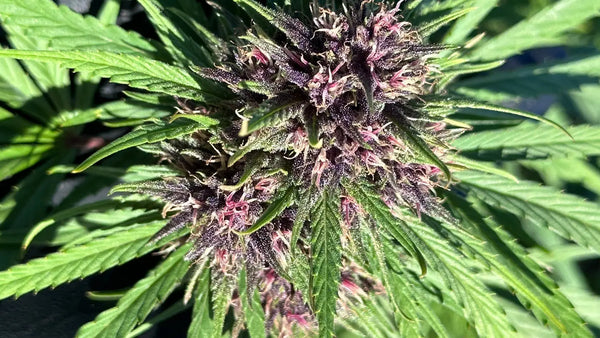
Conclusion: Working with Nature, Not Against It
The art of successful outdoor THCA harvest ultimately comes down to developing a collaborative relationship with your local environment rather than fighting against natural processes. While we've covered numerous strategies for managing weather, pests, moisture, and timing, the underlying principle remains constant: observe, adapt, and respond to what nature presents.
Every growing season teaches new lessons about your specific microclimate, genetic selections, and the intricate dance between plant biology and environmental conditions. The most successful outdoor cultivators maintain detailed records from year to year, noting what worked, what didn't, and how conditions varied from expectations. This accumulated wisdom becomes more valuable than any general guidelines, as it's specifically calibrated to your unique circumstances.
Remember that perfectionism can be the enemy of good results. You'll never achieve complete control over outdoor conditions, and that's actually part of outdoor cultivation's beauty. Plants grown in natural sunlight with natural environmental variation develop complex cannabinoid and terpene profiles that often surpass their indoor counterparts. Your goal isn't to eliminate all risks or control every variable – it's to minimize losses while maximizing the natural advantages of outdoor cultivation.
The strategies outlined in this guide provide a framework for decision-making, but they require your judgment and adaptation to your specific situation. Weather patterns, pest pressures, and optimal harvest timing will vary from region to region and season to season. Trust your observations, remain flexible in your planning, and don't hesitate to adjust strategies when conditions demand it.
As you gain experience with outdoor harvest timing and techniques, you'll develop an intuitive sense of when conditions are right, when risks are too high, and when to implement specific interventions. This intuition, combined with solid fundamental knowledge, separates experienced cultivators from beginners.
Ultimately, working with nature means accepting some unpredictability while implementing proven strategies that stack the odds in your favor. It means monitoring conditions obsessively during critical periods while also knowing when to trust your plants' resilience. It means being prepared to mobilize quickly when weather windows open up, but also having the patience to wait for optimal conditions when possible.
Your outdoor harvest represents the culmination of months of work, and these final decisions about timing, handling, and processing will largely determine whether that effort results in premium-quality flower or disappointing results. By implementing the techniques covered in this guide and adapting them to your specific circumstances, you'll maximize your chances of achieving the outstanding results that outdoor cultivation can deliver.
Frequently Asked Questions
When is the best time to harvest outdoor THCA cannabis?
The optimal outdoor harvest timing occurs when 20-30% of trichomes have turned amber, pistils have mostly darkened and receded, and weather conditions provide a stable window of dry, moderate temperatures. This typically occurs in mid-September through late October depending on your region and genetics. Monitor trichomes with a jeweler's loupe and be prepared to harvest earlier if weather threatens your crop, even if trichomes haven't reached perfect ripeness.
How do I prevent mold during outdoor cannabis harvest?
Prevent mold by maximizing airflow through selective defoliation, spacing plants adequately, and avoiding water exposure during the final two weeks before harvest. Harvest during dry weather windows, inspect plants daily for early mold signs, and consider batch harvesting to reduce risk. If mold appears, remove affected areas immediately and harvest surrounding healthy plants as soon as possible to prevent spread.
Should I harvest my outdoor cannabis in the morning or evening?
For outdoor cannabis tips, harvest in the morning after dew has evaporated but before temperatures rise significantly (typically 1-2 hours after sunrise). This timing captures plants after nighttime sugar translocation while preserving terpenes that volatilize in afternoon heat. In extremely hot climates, evening harvests can be preferable to avoid heat damage. Avoid harvesting when flowers are wet from dew or rain.
What's the difference between field trimming and indoor processing?
Field trimming removes fan leaves and excess material at harvest site, reducing transportation volume and drying space requirements but exposing work to outdoor conditions and potentially lower quality. Indoor processing moves whole plants inside for controlled environment processing, providing better quality control and slower drying but requiring more space and transportation capacity. Many operations use a hybrid approach with rough field trimming followed by detail work indoors.
How do I protect my outdoor crop from pests during late flowering?
Protect late-flowering plants through daily inspections, hand-removal of caterpillars and pests, beneficial insect releases, and physical barriers (fencing for deer, netting for birds). Avoid pesticides during the final month before harvest. Focus on prevention through plant health maintenance and early detection rather than reactive treatments. Consider harvesting slightly early if pest pressure becomes overwhelming to prevent total crop loss.
Can I harvest outdoor cannabis in batches?
Yes, batch harvesting is often optimal for maximize outdoor THCA results. Harvest top colas first when they're ripe, allowing lower branches additional time to mature. This approach distributes workload, accommodates processing capacity limitations, and provides insurance against total weather-related losses. Plan for 2-3 harvests over 1-2 weeks if plant maturity varies significantly across your crop.
What should I do if rain is forecasted before my planned harvest?
If rain threatens your crop within the harvest window, assess plant maturity immediately. Harvest any plants showing 15-20%+ amber trichomes before rain arrives, even if it means working extended hours. For plants not ready, implement protective coverings (tarps, hoop houses) carefully, removing them immediately after rain to prevent heat and humidity buildup. Inspect all plants within 24 hours after rain for early mold signs and harvest immediately if infection appears.
How important is transportation handling for outdoor harvest quality?
Transportation handling significantly impacts final THCA crop quality. Use shallow containers to prevent crushing, avoid prolonged sun exposure during transport, move plants from field to processing as quickly as possible, and never use sealed containers that trap heat and moisture. Gentle handling preserves trichomes and maintains flower structure, directly affecting your final product's potency and appearance.

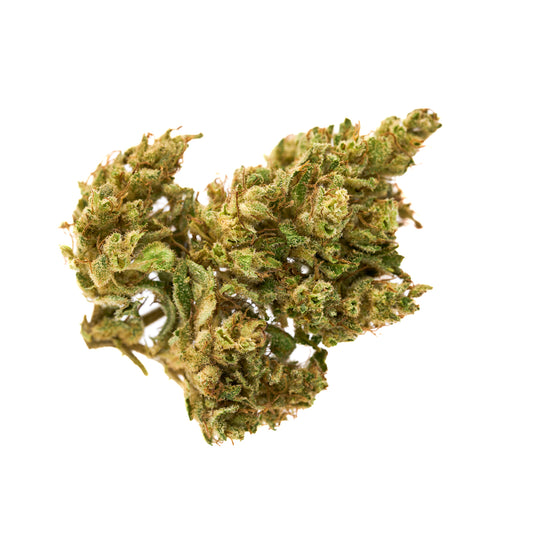
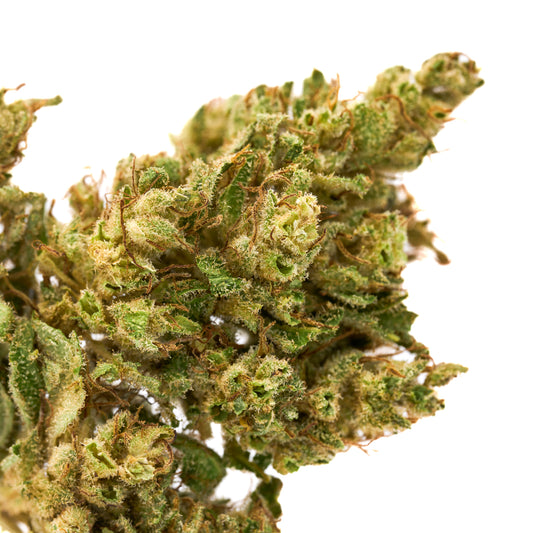
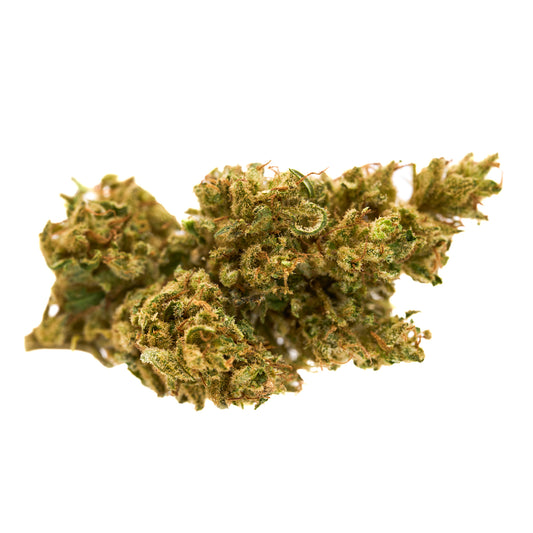
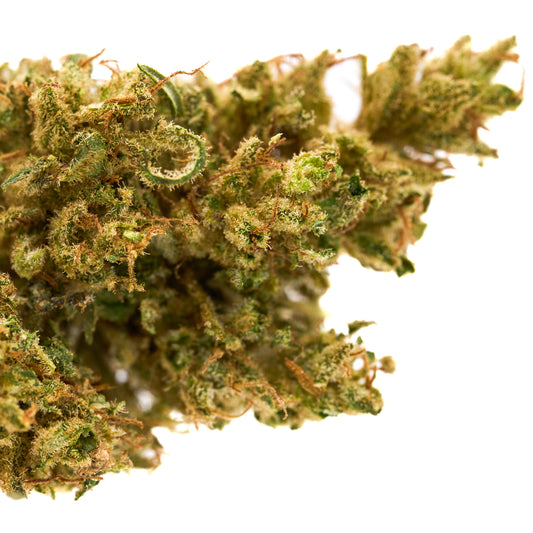
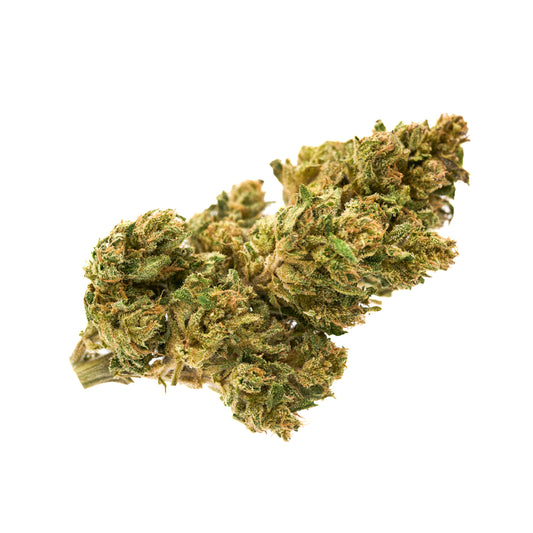
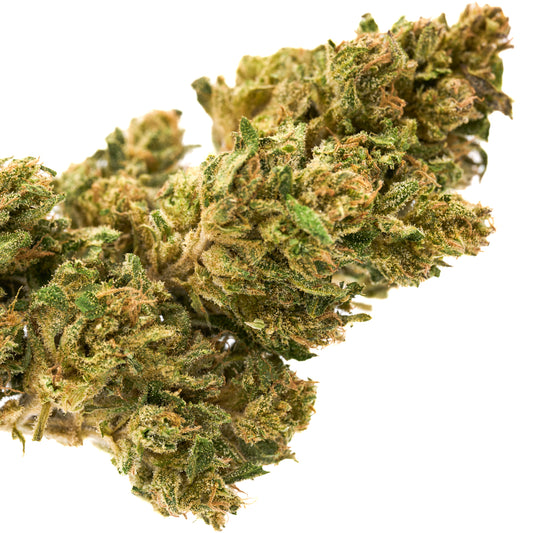



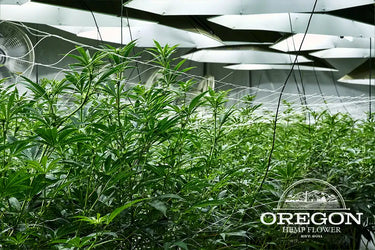

Leave a comment
Please note, comments need to be approved before they are published.